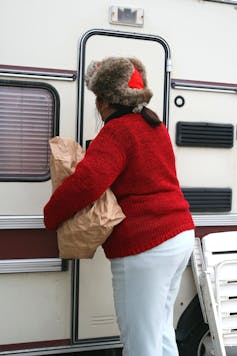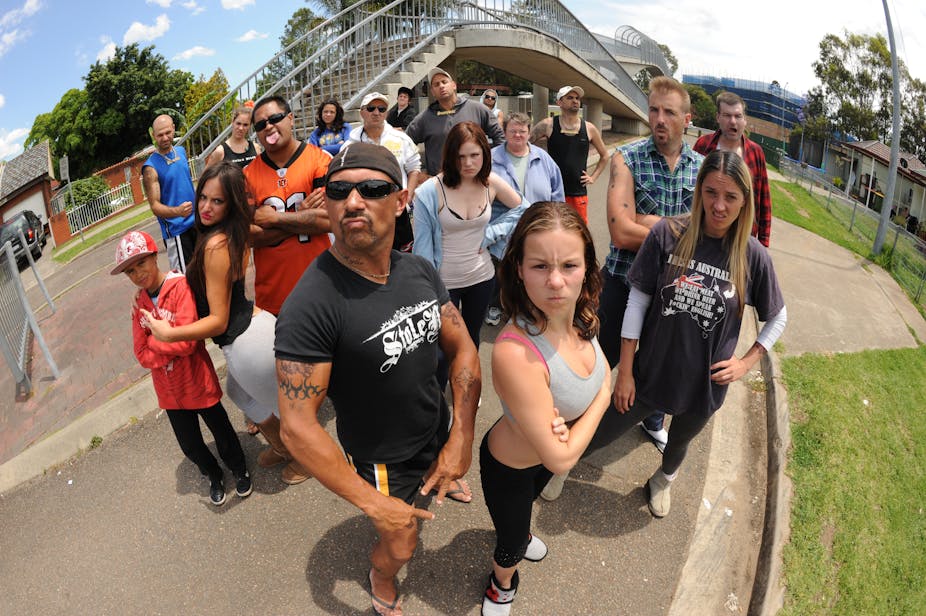The Conversation is running a series, Class in Australia, to identify, illuminate and debate its many manifestations. Here, Nick Haslam reveals that some social groups are consistently seen as being more animal-like than the rest of us.
Inequality is everywhere. Even the forms of prejudice are unequal. Racism, sexism and homophobia are staples of the academy, but “classism” has largely escaped attention.
This neglect is evident in my own discipline of social psychology. There is something about social class that makes us look away, leaving it to political theorists or to the dismal scientists in the economics department.
On the rare occasions when psychologists do study class we usually examine stereotypes of the poor. Our studies tend to map these stereotypes onto the two main dimensions of stereotype content: warmth and competence. Groups that are stereotyped as warm are seen as friendly and cooperative, and those seen as competent are viewed as intelligent and capable. Groups stereotyped as relatively cold or incompetent – more or less everyone other than those we think of as “us” – lack these virtues.
Two patterns of findings arise when researchers study class-related stereotypes. The very poor, such as the homeless, are seen as cold and incompetent – antagonistic and useless.
In one study, people who viewed images of homeless people failed to activate parts of the brain involved in attributing thoughts and feelings to others. Instead they activated brain structures that underpin disgust. In essence, homeless people were perceived as revolting objects rather than mindful subjects.
When we turn to less extreme poverty a different pattern sometimes emerges. In what is sometimes called a complementary stereotype, the poor are viewed as incompetent but warm. They lack the aptitude to do better economically, but they are comfortable with their position.
This stereotype serves a useful function. It justifies the subordinate position of the poor in our society, and thereby the fairness of our economic system.
A class of lesser humans
But do (in)competence and warmth capture all that matters in social class stereotypes? My colleagues and I thought not. We suspected that some stereotypes might picture “lower class” people as lesser humans.
Psychological research has shown that some ethnic and racial groups such as indigenous people and African-Americans are subtly or unconsciously perceived as animal-like. We guessed that economically disadvantaged people might be seen similarly. Other researchers have found that low-socioeconomic status (SES) groups are sometimes viewed in a bestial light.
American “white trash” are often represented as stupid, coarse, dirty and sexually unrestrained. In the UK, “chavs” are sometimes described as aggressive, crude and feral. And Australian “bogans”, although often presented as lovable figures of innocent fun, are also understood to be uncivilised simpletons at best and violent throwbacks at worst.
In each case, a group of people is seen as closer to animal nature than the rest of us.

We conducted three simple studies, which have just been published. For the first study, we recruited participants from Australia, the US and England and gave them a simple task. Half of each sample rated whether 40 personality characteristics were more typical of bogans, white trash or chavs, on the one hand, or of other people (for example, people who are not bogans). The other half of each sample rated the extent to which the same characteristics were more typical of apes or humans.
We found that the characteristics that were seen as distinguishing low-SES people from others tended to be the very same ones that distinguished apes from humans. The white trash, chav and bogan stereotypes were remarkably similar in content, despite their different national settings. Each group was seen as relatively ape-like, lacking the characteristics that are unique to humans.
Our second study focused on the low-SES white stereotype in the US. It showed that the ape-like content of this stereotype was not merely a side-effect of using the derogatory white trash label. The stereotype was equally ape-like when we described the group as “lower-class whites”. It was also held equally by rich and poor and by egalitarians and non-egalitarians, rather than being simply a way for an advantaged few to sneer at those below.
The third study returned to Australia. Once again, bogans were stereotyped as animal-like, but in a more general way. We found that the stereotype overlapped with the perception of rats and dogs as well as apes. In addition, although bogans were seen as somewhat warm and incompetent, their perceived similarity to animals was separate from these characteristics.
Classism echoes racism
One of the most interesting dimensions of this research is how it echoes work on race. We know that some ethnic groups continue to be seen as more primitive and less psychologically evolved than others, a belief that sometimes surfaces when people are likened to apes or monkeys. But very similar images seem to lie beneath the surface of our stereotypes of economically disadvantaged whites.
As venerable social psychologist Gustav Jahoda wrote in his book Images of Savages, the rural and urban poor are sometimes viewed much as colonised “savages” were seen in centuries past. Or as David Nichols wrote in The Bogan Delusion, bogans are to their economic or cultural superiors:
…what the ‘lower races’ were to most whites a century ago.
The other interesting aspect of this work is that class stereotypes can picture less advantaged groups as animal-like without being entirely negative. In our third study, bogans were seen as warm and friendly, but at the same time bestial. Class stereotypes can be demeaning without being in all respects derogatory. But although they may have superficially positive elements, stereotypes that represent low-SES people as lovable brutes are ultimately degrading.
This new work on social class stereotypes is just one aspect of psychology’s awakening to economic inequality. Unequal social arrangements have myriad psychological implications. Greater inequality is associated with less happiness, lower levels of trust and honesty and lower social connection. More economically unequal nations have higher obesity rates. Some work from my own research group shows that the citizens of such nations are more likely to think they are superior to their fellows.
Class stereotypes are just one manifestation of a form of inequality that demands greater attention from my field.
See the other instalments of the series Class in Australia here.

